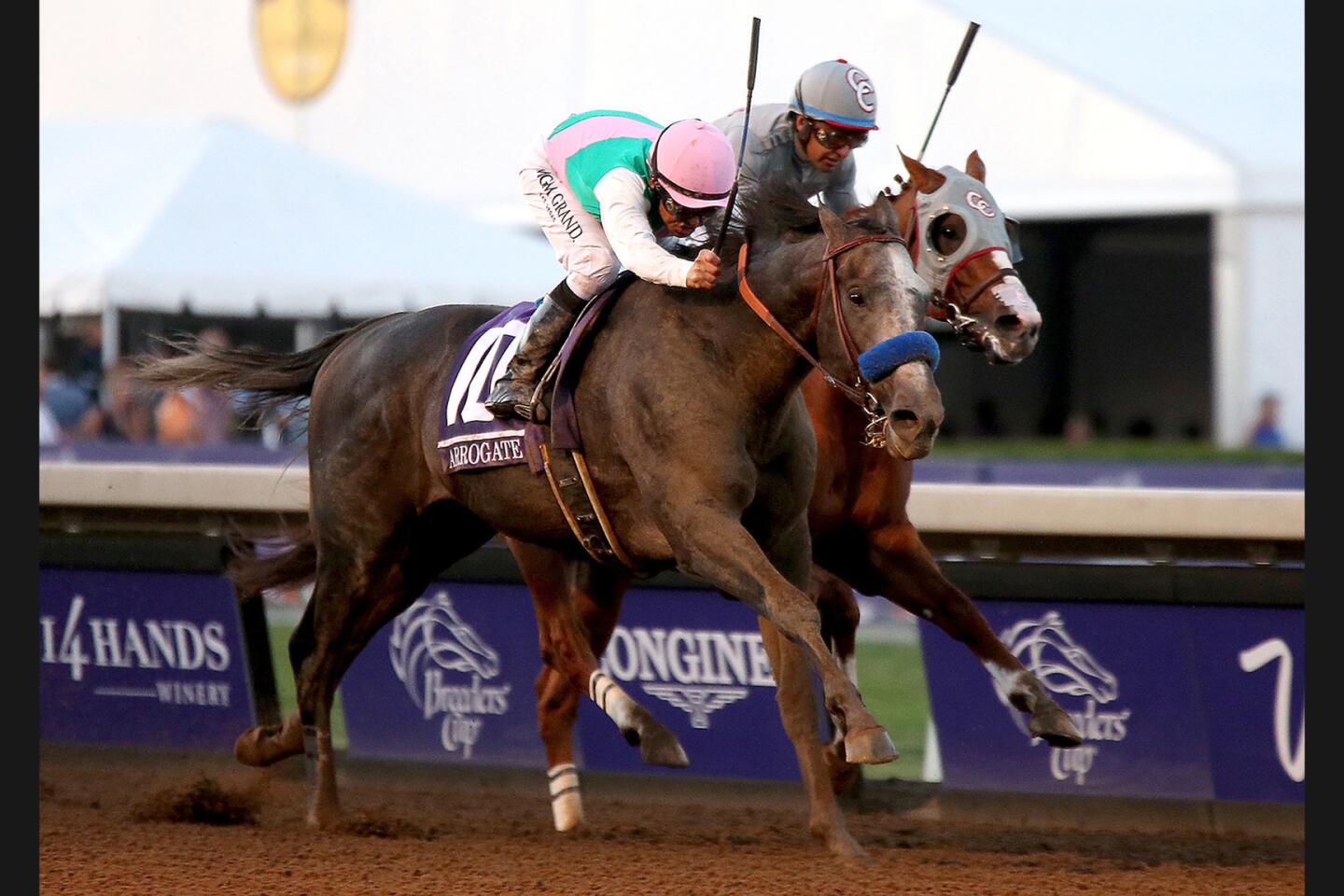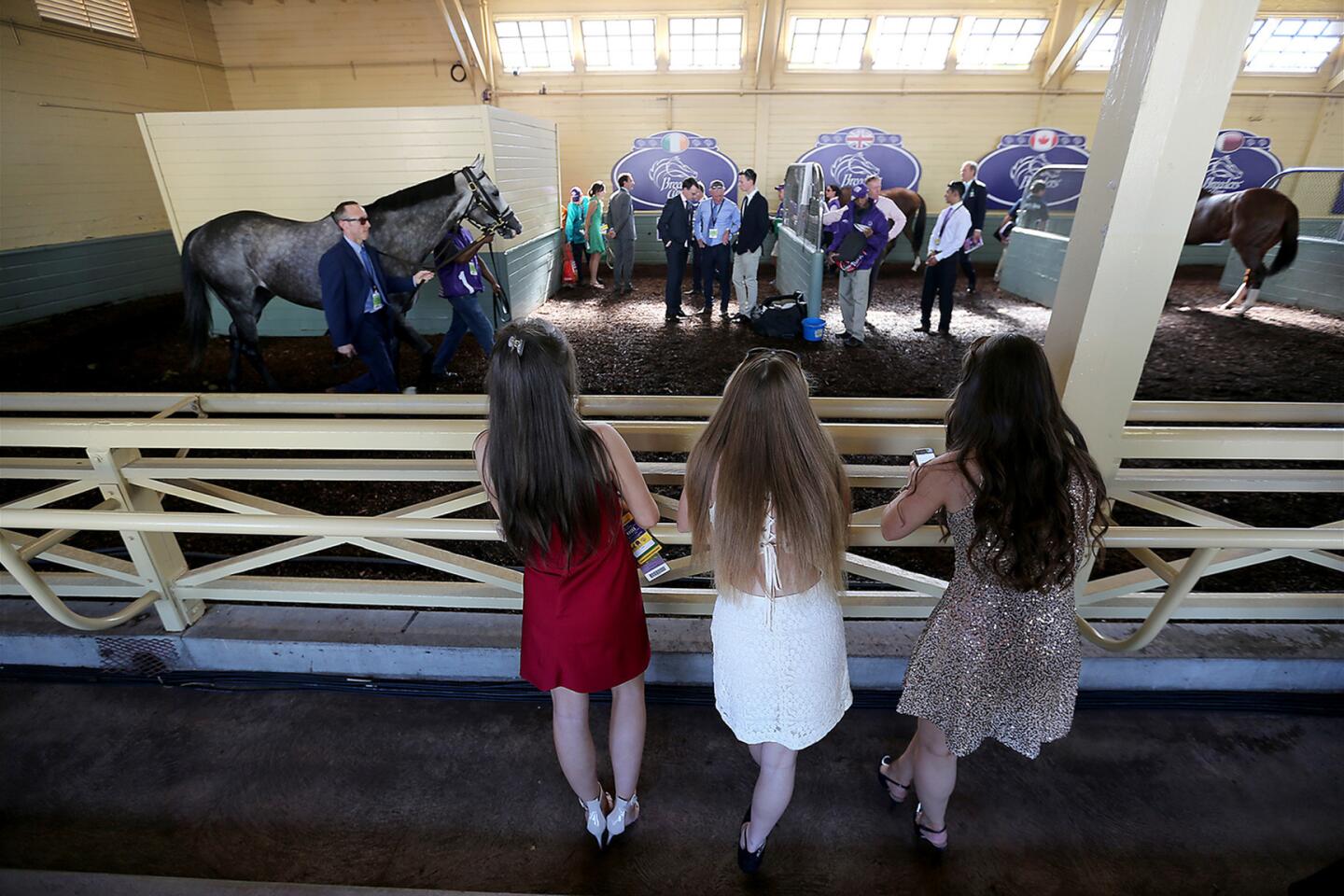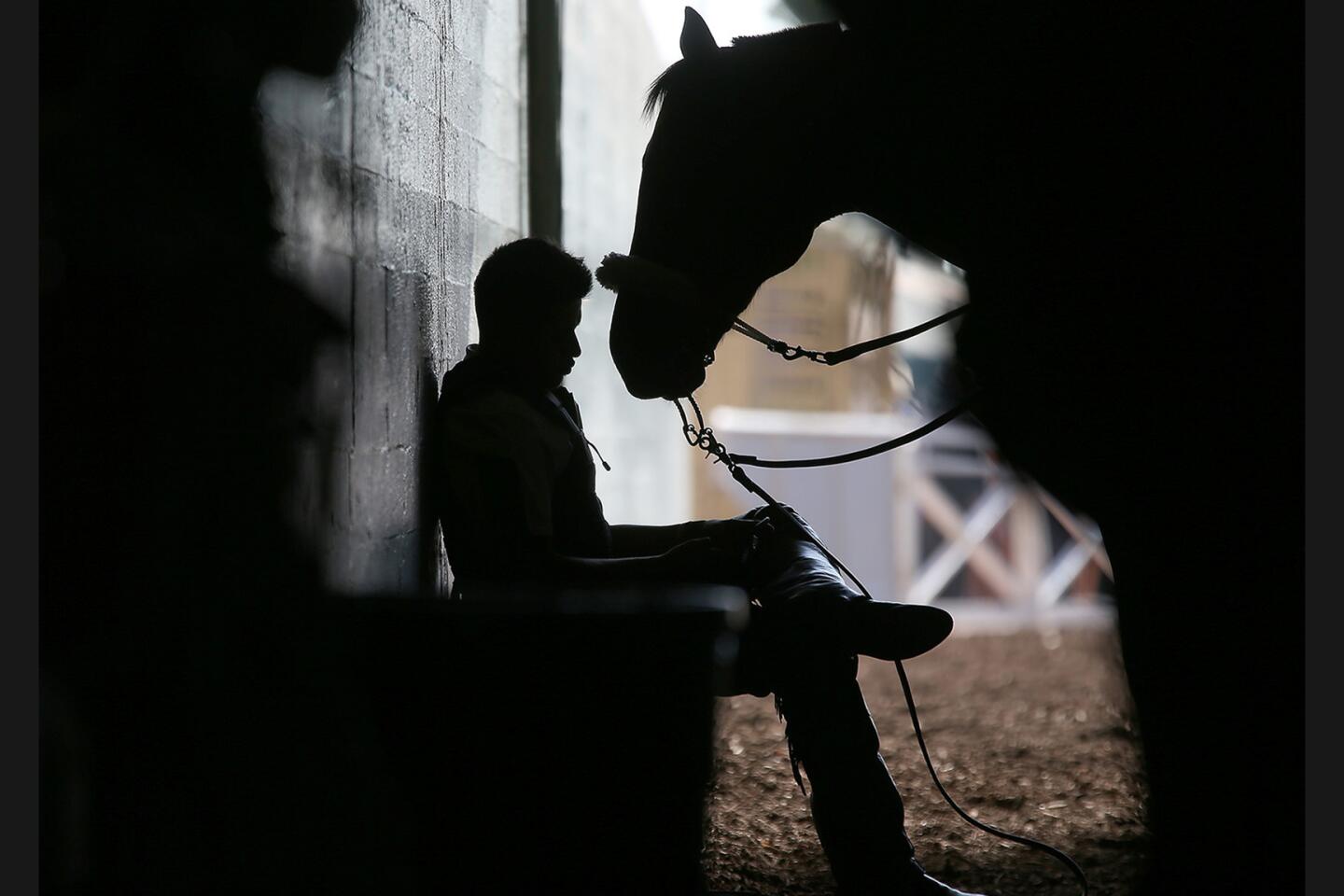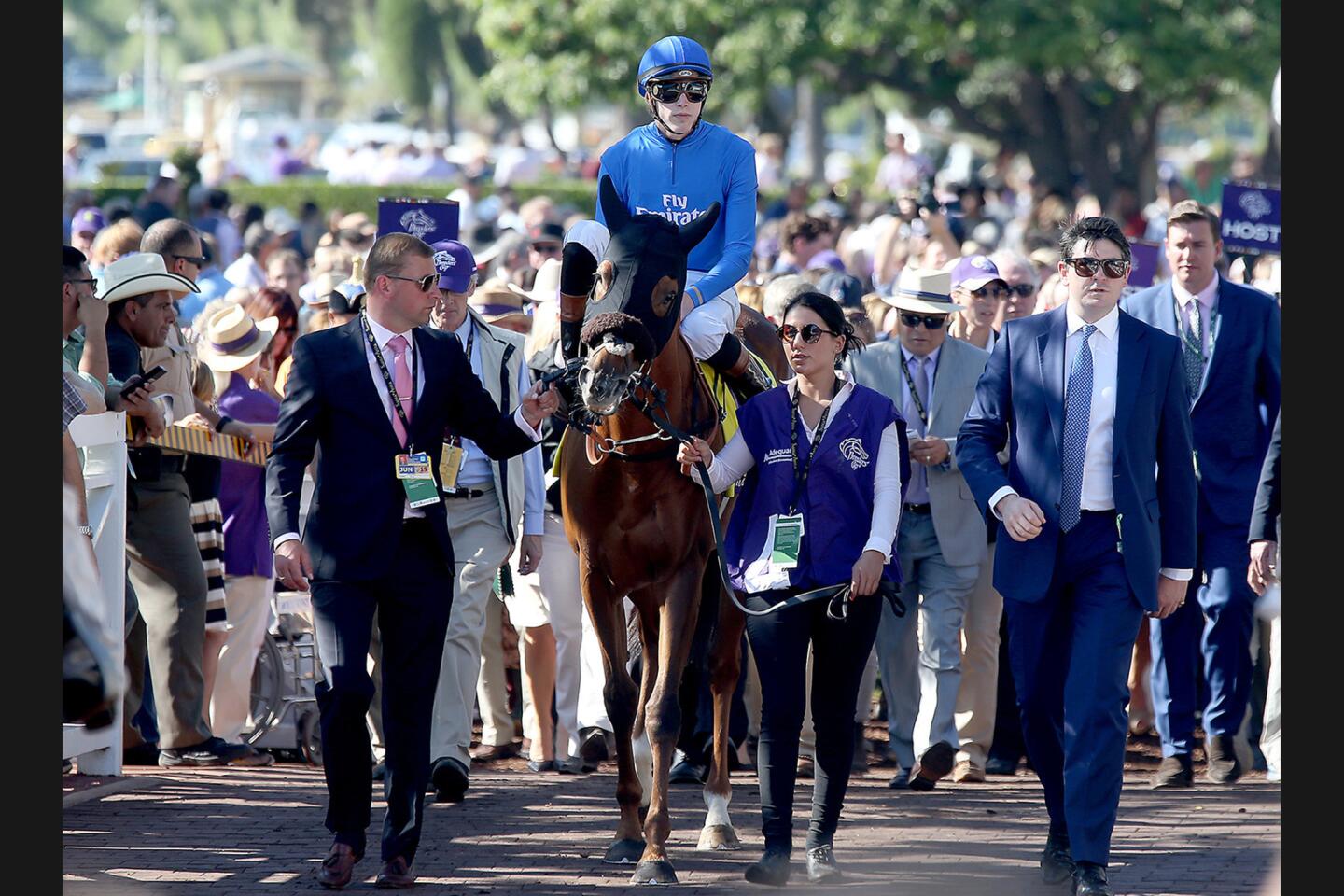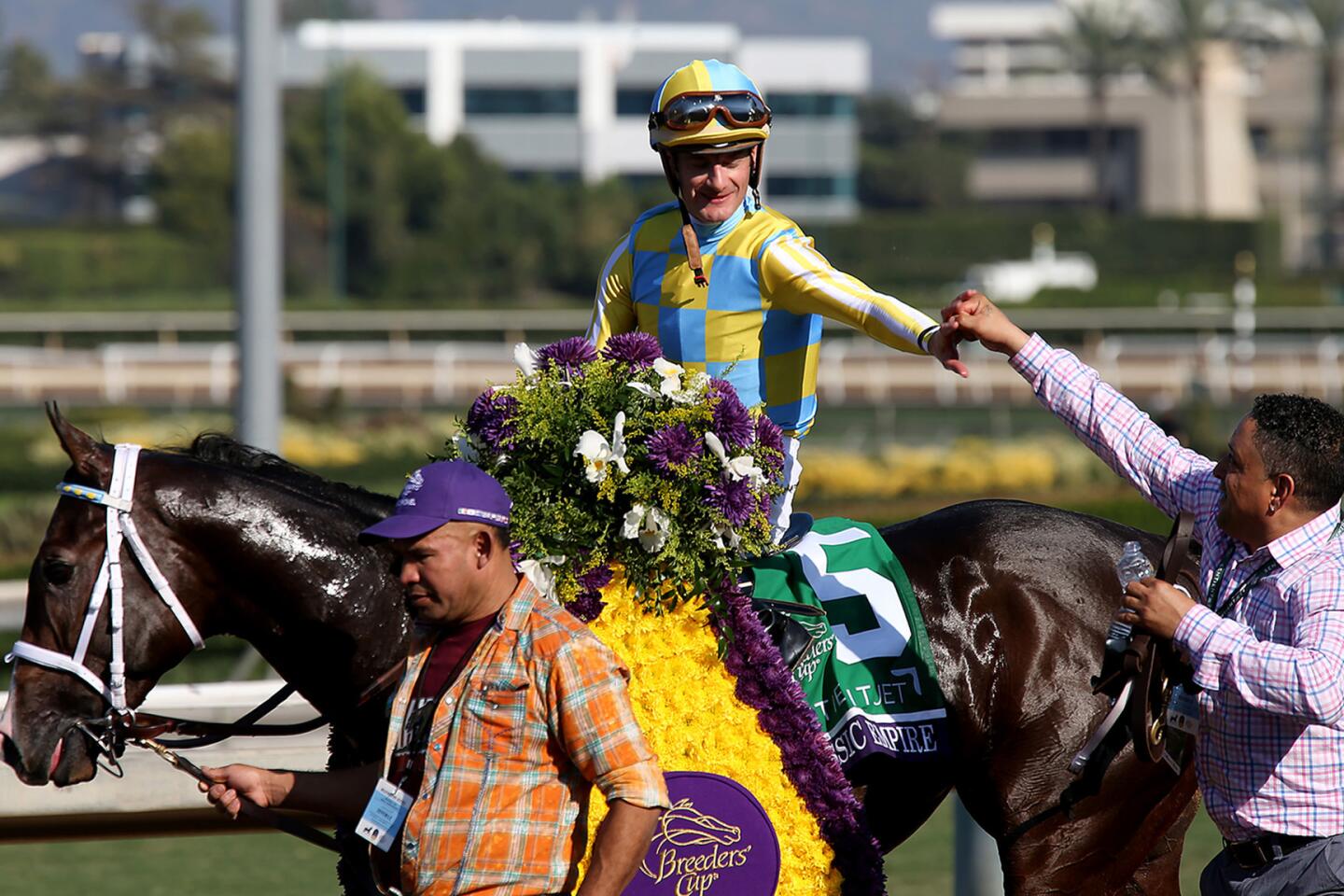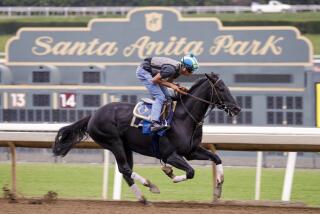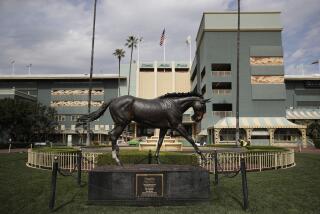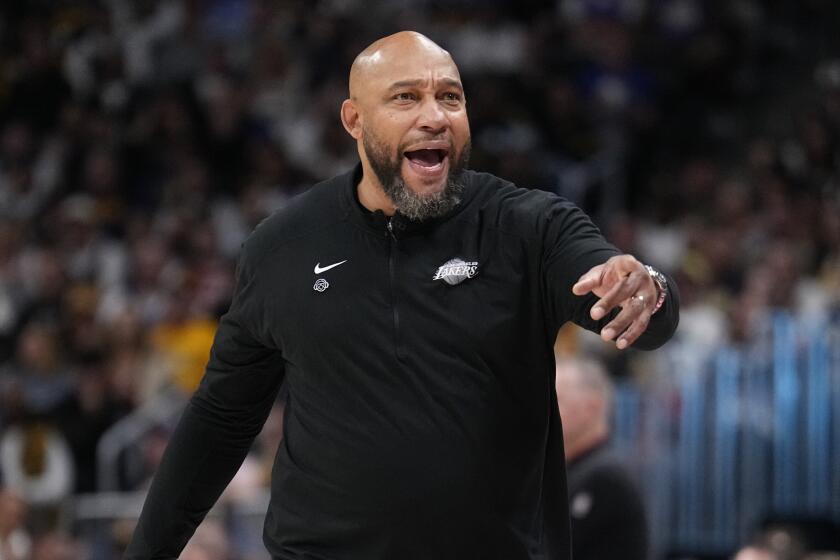Breeders’ Cup success doesn’t fix the problems that remain in racing
Long after the light was obscured by the San Gabriel Mountains on Saturday night, the sight of success of the 33rd running of the Breeders’ Cup was the endless sea of taillights trying to merge onto the surface streets surrounding Santa Anita Park.
The track in general and the sport in particular had just concluded a spectacular two days of racing, finding a relevance rarely seen except on the first Saturday in May.
Highlighting the event was the best stretch duel you will ever see between a retiring mare named Beholder and young filly Songbird, who was undefeated in 11 races. And, there was the crowning of a new superstar in Arrogate, who ran down the richest and most popular horse in the world, California Chrome.
The optimist would hope this was the moment where horse racing starts to matter again. The realist would reference the idiom that even a blind squirrel finds an acorn every once in a while.
Finding himself with the job of a realist whose personality has to be that of an optimist is Keith Brackpool, chairman of the Stronach Group’s West Coast operations. He’s in charge of Santa Anita.
As he looked out from the trackside suite that doubles as his office Saturday, he was quite pleased, predicting a crowd of more than 70,000 that day. He was right. The total was 72,811.
But he also ticked off the obstacles and self-inflicted wounds facing horse racing as it seeks to keep a place in the sports landscape. The word he kept coming back to in regards to the future of racing in Southern California was “sustainable” and what that might mean for the track.
“What we would very much like to be able to do is keep racing as a sustainable model, which means some of the real estate probably gets developed for alternate purposes,” Brackpool said. “We’re in discussions and plans on that at the moment. We would talk about potentially moving stables and doing different things. There are going to have to be some long term fixes to the economic model.”
Stabling has been a major issue since Hollywood Park was shuttered and is in the process of becoming the new home of the Rams. There is stabling at Los Alamitos, but that’s not likely to last forever.
“I think at some stage Los Al will go away,” Brackpool said. “We just signed a three-year deal so it’s not going away for the next three years. … But we, along with the horsemen, are looking at a couple of other locations within Southern California. We could perhaps jointly procure an auxiliary stabling facility. It’s certainly something we’re going to have to look at.”
Even finding land outside the immediate L.A. area has been a problem.
“It’s all the same issue,” Brackpool said. “Land may be extraordinarily valuable here but land is very valuable in the Central Valley. Land is incredibly valuable in the Santa Ynez Valley, which is a major stabling area. You know you can have vineyard land that is worth $35,000 an acre. You can’t be training too many horses when you can put vineyards in.”
Much as Los Alamitos is family owned, it’s not lost on anyone that Santa Anita’s parent company, the Stronach Group, is also a family business headed by 84-year-old Frank Stronach.
“Let me tell you if this property were not controlled by a family that actually cares about racing and the success of racing, I think you would see another result a few years ago,” Brackpool said. “They were brave enough to listen to us and say, ‘Let’s invest some money, let’s get a new demographic in here, let’s really give this a try.’”
Poised to ascend to final-word status of the Stronach racing empire, which includes Gulfstream, Pimlico, Laurel, Golden Gate and Portland Meadows, is Belinda Stronach, Frank’s daughter.
She is the chairman and president of the racing group and is very hands on, according to Brackpool. She’s heading the Pegasus Cup project, a $12-million race at Gulfstream in January.
“I think as long as the business continues to show that it can be sustainable, I think Belinda will be very supportive of keeping racing going,” Brackpool said. “There are some long-term fixes that are very necessary.”
Some of those fixes may be out of reach as obstacles in California are greater than just about anywhere else. It’s the only major racing state that receives no purse augmentation from other forms of gaming. And then there was Proposition 1A in 2000, which essentially gave all the gaming rights to casinos on Indian Tribal lands.
“It puts California at an enormous disadvantage,” Brackpool said. “California, by a leap, is the most expensive state to do business in in any form.”
Still, Brackpool, whose time in the U.S. has softened his British accent, perks up when talking about the successes.
“Our attendance over the last two years has seen an increase,” he said. “I actually think that increase is significant because up until then there was a serious decline taking place in live attendance in racing. So if you think of the generations that are no longer coming, the fact that we now have an increase means that we do have a surge of new people coming to the sport. I think the facilities are a huge part of it.”
If you are going to use the facilities as a selling point, you would be hard pressed to have a better poster child than Santa Anita.
The weekend’s Breeders’ Cup more than proved that point.
Twitter: @jcherwa
More to Read
Get our high school sports newsletter
Prep Rally is devoted to the SoCal high school sports experience, bringing you scores, stories and a behind-the-scenes look at what makes prep sports so popular.
You may occasionally receive promotional content from the Los Angeles Times.

